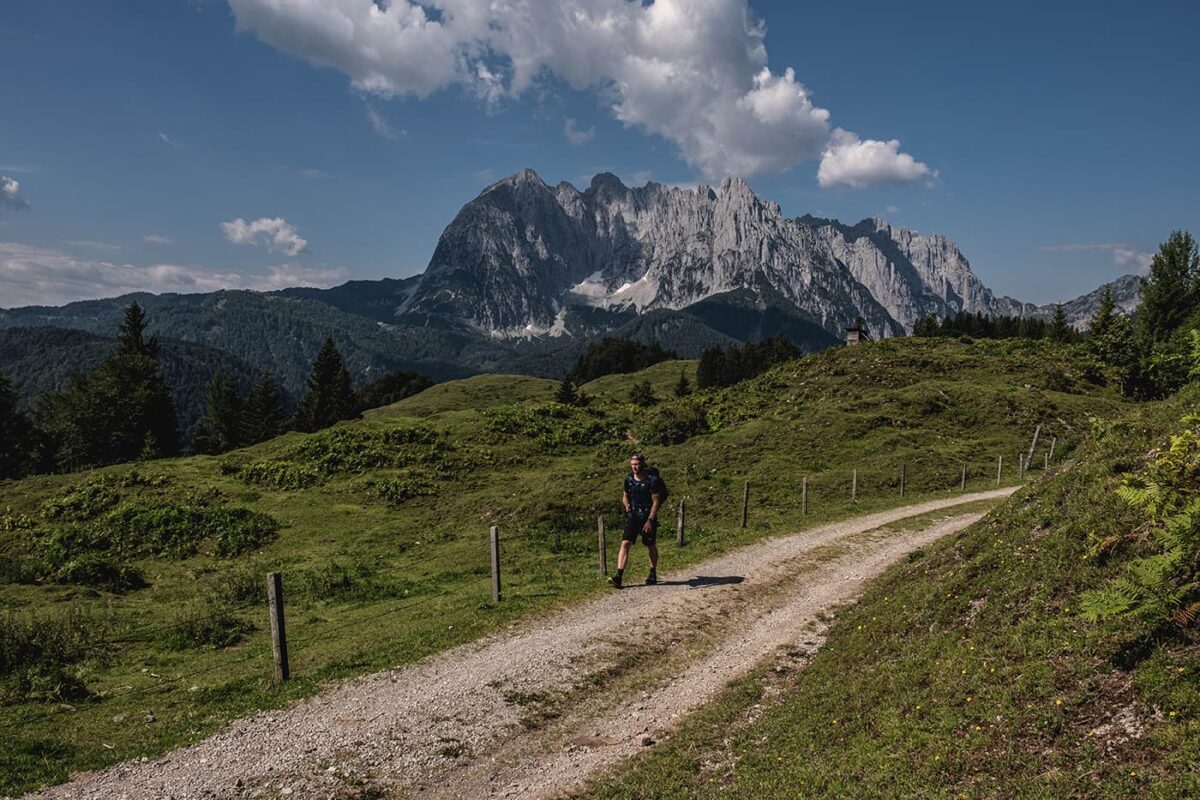The third stage leads you across several alpine pastures to the east. Shortly after Griesenau, you pass the legendary Devil’s Chapel; then turn left past the Gasthaus Altmühl into the Schnappengraben. Soon you will reach a beautiful alpine plateau, where the Stubenalm with its cheese will be a very welcome rest stop. Shortly after, you pass through a mystical rock labyrinth known as the Devil’s Alley. After another break at the Prostalm where you’ll have views in all directions, only the descent to Erpfendorf is left.
From Erpfendorf, hike along a lightly trafficked road to the entrance of Grießenbachklamm (parking lot). Walk on footbridges and hanging bridges through the quaint gorge with waterfalls. At the end, the Jägersteig leads up to the Angerlalm, a managed alpine pasture. Descend on a trail first to the south, then on a forest road to the west. Passing through the hamlet of Scheffau, you’ll reach the outskirts of St. Johann and – slightly south – Eichenhof.
In the final stage, following signposted trails, you first make your way to the Eifersbacher Waterfall. Along the way, you’ll pass by the Theresienbrunnen, the center of a former spa town. At the end of the gorge, a steep staircase leads up to a forest road. From here, you’ll now follow the signs to Kröpflalm and Harschbichl. From Harschbichlalm (1,604 meters), there is a fantastic view of the Wilder Kaiser. Either take a detour (approximately one and a half hours) to Kitzbüheler Horn (1,996 meters) or descend directly via Stanglalm and Müllneralm – mostly on alpine roads and farm tracks – to Wiesenschwang, the endpoint of the Koasa Trail.




















